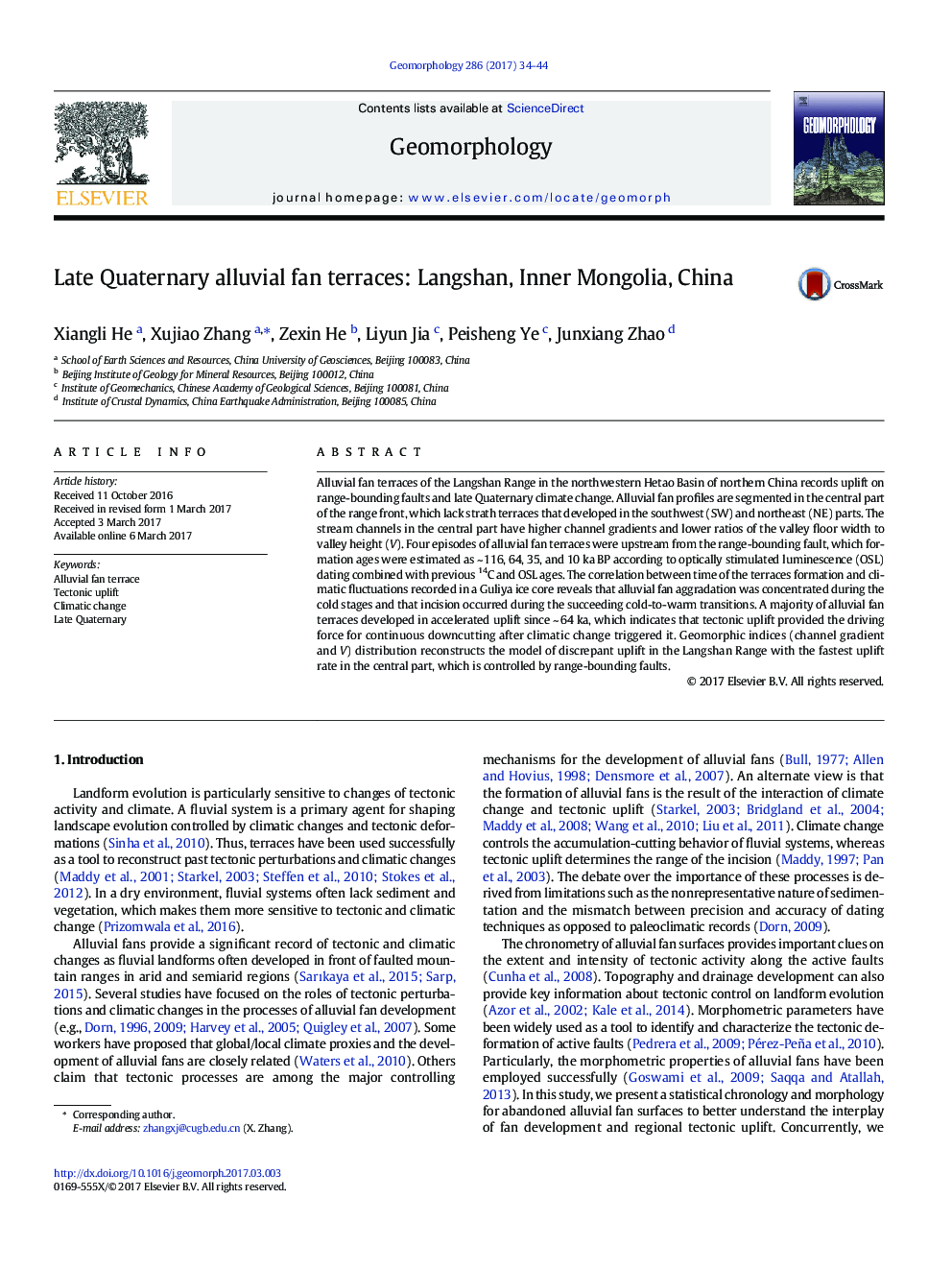| Article ID | Journal | Published Year | Pages | File Type |
|---|---|---|---|---|
| 5781063 | Geomorphology | 2017 | 11 Pages |
â¢The chronological framework of alluvial fan terraces is established by combining OS Lages and 14C ages.â¢This study reveals the correlation between formation ages of the fan terraces and climatic fluctuations.â¢Relationship of terraces formation and incision rates indicates regional uplift gave driving force for continuous incision.â¢We reconstruct the model of discrepant uplift in the Langshan Range according to geomorphic indices distribution.
Alluvial fan terraces of the Langshan Range in the northwestern Hetao Basin of northern China records uplift on range-bounding faults and late Quaternary climate change. Alluvial fan profiles are segmented in the central part of the range front, which lack strath terraces that developed in the southwest (SW) and northeast (NE) parts. The stream channels in the central part have higher channel gradients and lower ratios of the valley floor width to valley height (V). Four episodes of alluvial fan terraces were upstream from the range-bounding fault, which formation ages were estimated as ~Â 116, 64, 35, and 10Â ka BP according to optically stimulated luminescence (OSL) dating combined with previous 14C and OSL ages. The correlation between time of the terraces formation and climatic fluctuations recorded in a Guliya ice core reveals that alluvial fan aggradation was concentrated during the cold stages and that incision occurred during the succeeding cold-to-warm transitions. A majority of alluvial fan terraces developed in accelerated uplift since ~Â 64Â ka, which indicates that tectonic uplift provided the driving force for continuous downcutting after climatic change triggered it. Geomorphic indices (channel gradient and V) distribution reconstructs the model of discrepant uplift in the Langshan Range with the fastest uplift rate in the central part, which is controlled by range-bounding faults.
